Remote Working in the iGaming Industry: Kindred Group Dissertation
VerifiedAdded on 2022/08/19
|49
|11910
|14
Thesis and Dissertation
AI Summary
This dissertation investigates the feasibility of remote working at Kindred Group plc, a global gaming company headquartered in Malta. The study explores the current limited implementation of remote work within the organization, examining the rationale for the study, its academic significance, and the research aims and objectives. The literature review delves into the iGaming industry, remote working growth, its benefits and limitations, and the impact on management, office space, employee engagement, performance, and technology. The methodology outlines the research philosophy, approach, and data collection methods, including interview structures and ethical considerations. The analysis and results section will present the findings, followed by conclusions, recommendations, and personal reflections. The study aims to determine the viability of remote working in the online gambling industry, assessing its effects on employee performance, commitment, and satisfaction, as well as its impact on the organization's operational processes and costs. The dissertation contributes to understanding the benefits and drawbacks of remote working, particularly in the context of the gaming industry.
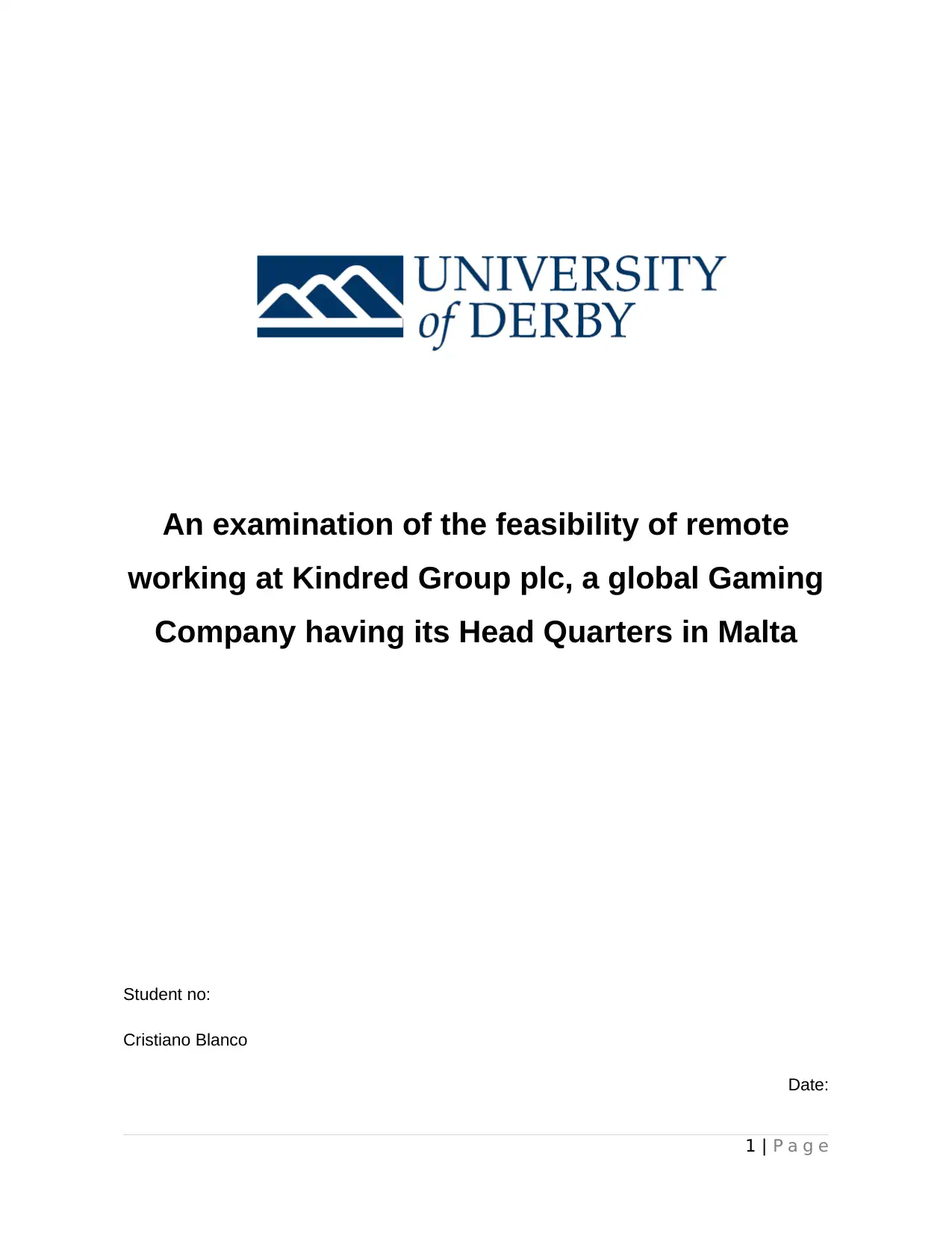
An examination of the feasibility of remote
working at Kindred Group plc, a global Gaming
Company having its Head Quarters in Malta
Student no:
Cristiano Blanco
Date:
1 | P a g e
working at Kindred Group plc, a global Gaming
Company having its Head Quarters in Malta
Student no:
Cristiano Blanco
Date:
1 | P a g e
Paraphrase This Document
Need a fresh take? Get an instant paraphrase of this document with our AI Paraphraser

DECLARATION OF AUTHENTICITY
Student Name:
Student ID:
Programme of Study: 2018-7IM994 Independent Study
I, the undersigned declare that I am the legitimate owner of this dissertation and that this
dissertation is my original piece of work. All information sources and literature consulted to
compile this dissertation are cited and listed on the References section. I also declare that
throughout the whole process, I have abided by the University of Derby Ethics and Research
Committee.
______________________
Signature of the Researcher
2 | P a g e
Student Name:
Student ID:
Programme of Study: 2018-7IM994 Independent Study
I, the undersigned declare that I am the legitimate owner of this dissertation and that this
dissertation is my original piece of work. All information sources and literature consulted to
compile this dissertation are cited and listed on the References section. I also declare that
throughout the whole process, I have abided by the University of Derby Ethics and Research
Committee.
______________________
Signature of the Researcher
2 | P a g e
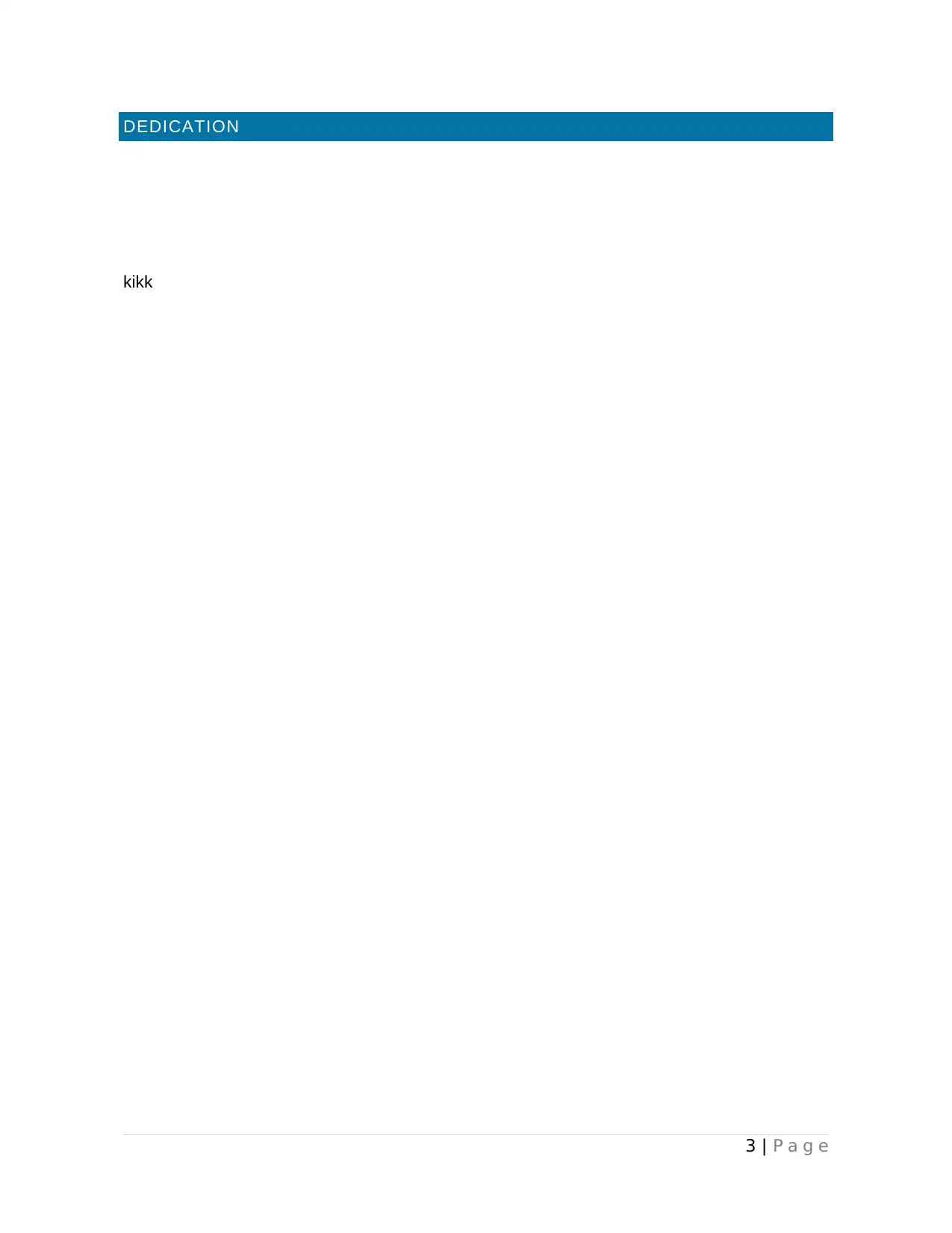
DEDICATION
kikk
3 | P a g e
kikk
3 | P a g e
⊘ This is a preview!⊘
Do you want full access?
Subscribe today to unlock all pages.

Trusted by 1+ million students worldwide
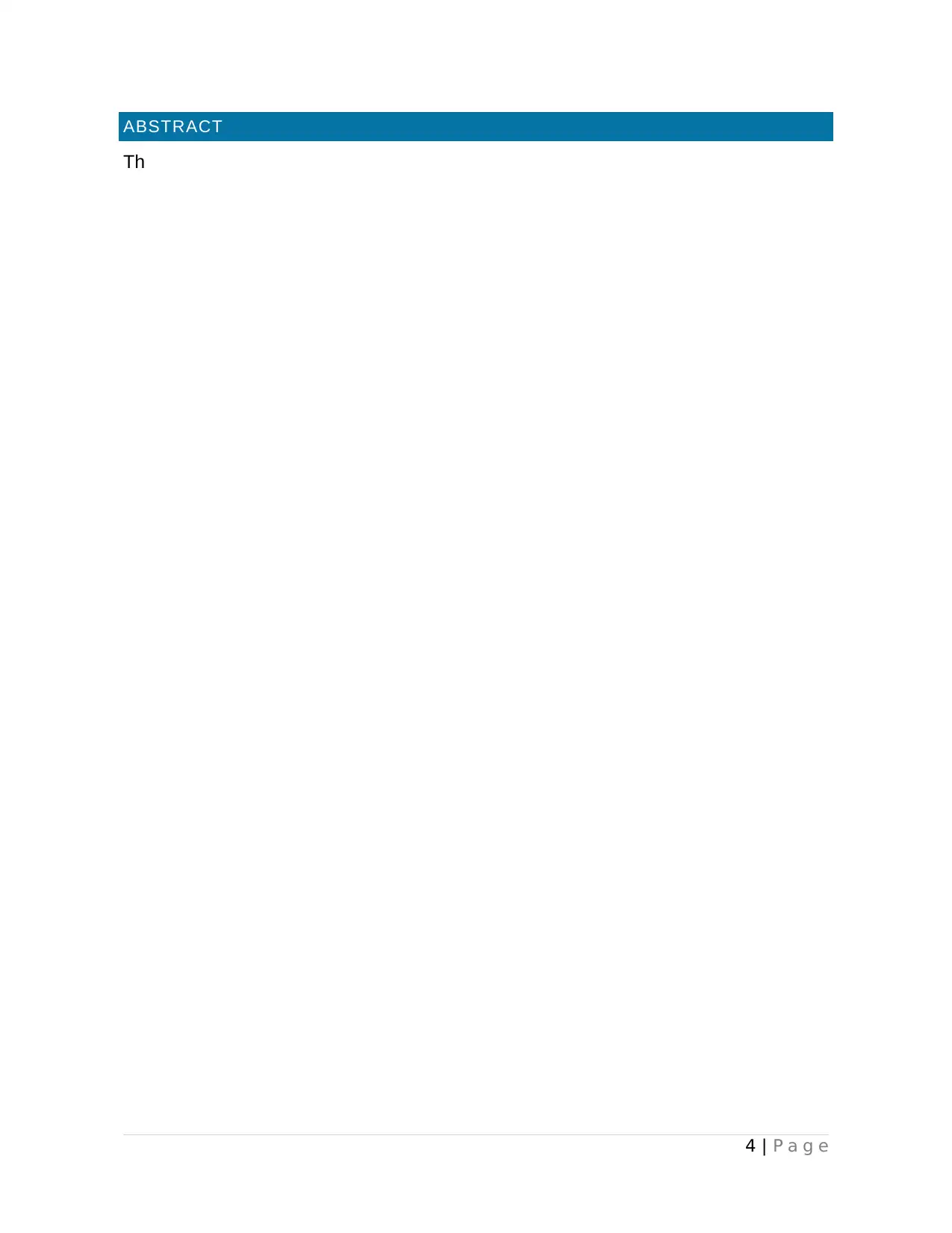
ABSTRACT
Th
4 | P a g e
Th
4 | P a g e
Paraphrase This Document
Need a fresh take? Get an instant paraphrase of this document with our AI Paraphraser

LIST OF FIGURES
Thi
5 | P a g e
Thi
5 | P a g e
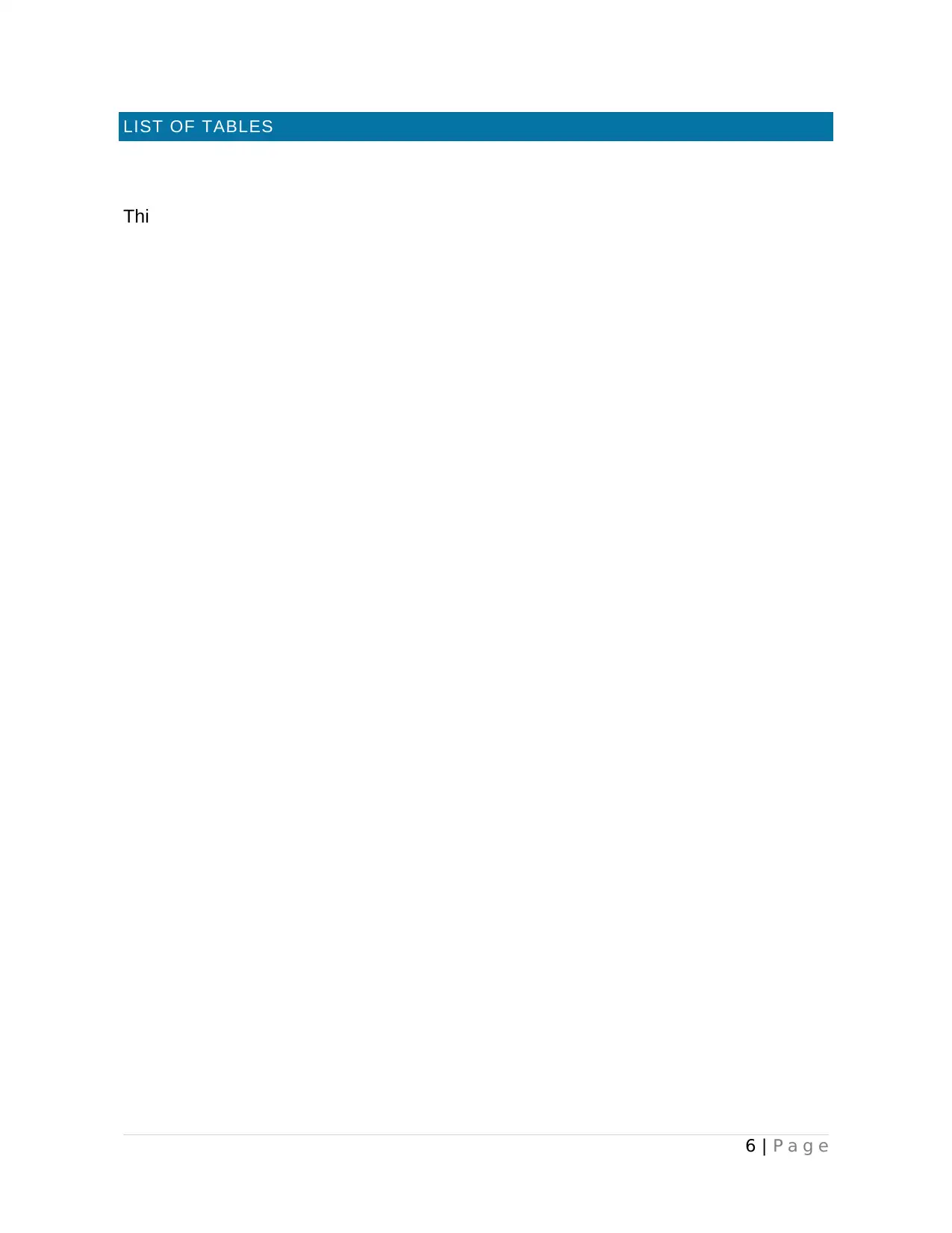
LIST OF TABLES
Thi
6 | P a g e
Thi
6 | P a g e
⊘ This is a preview!⊘
Do you want full access?
Subscribe today to unlock all pages.

Trusted by 1+ million students worldwide
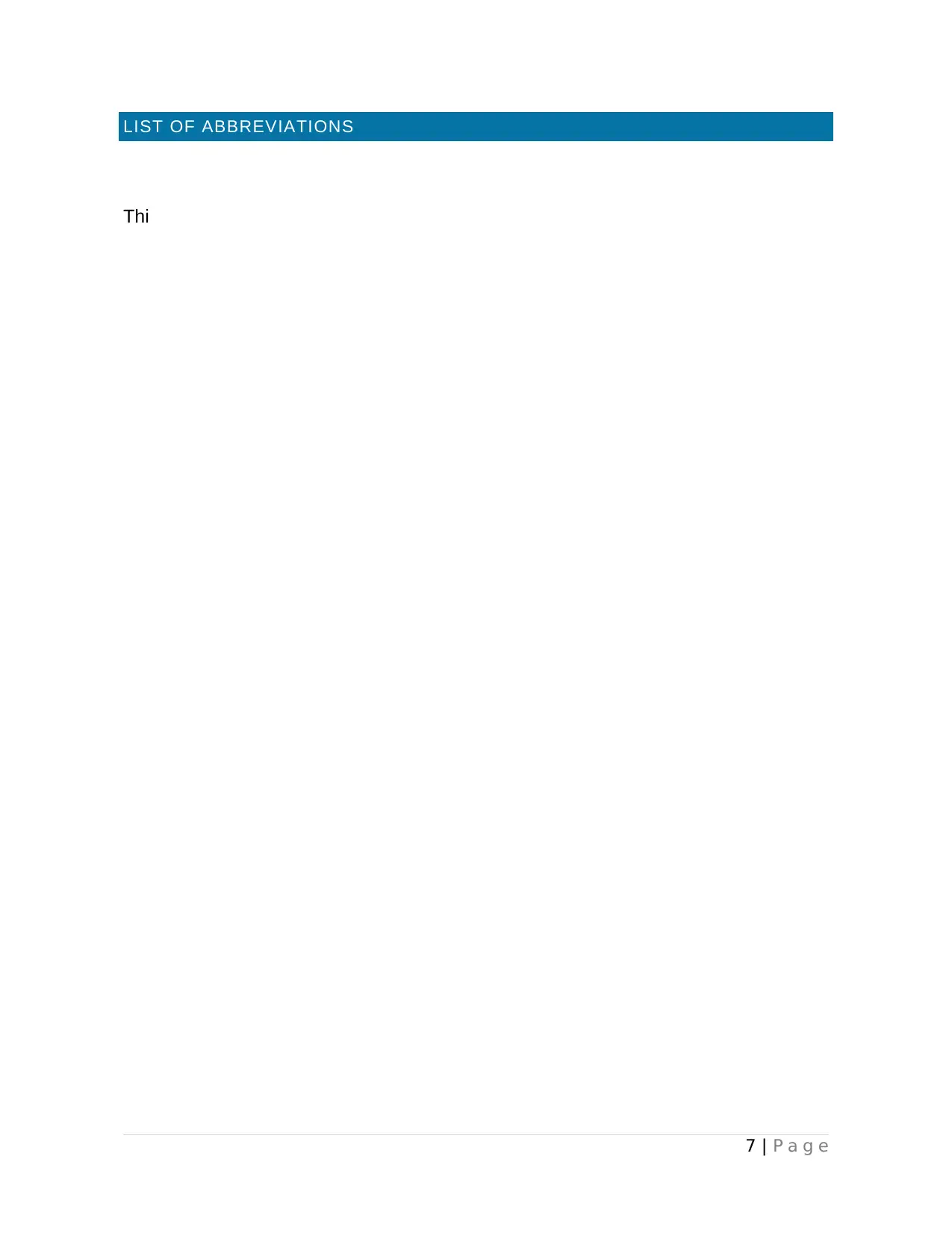
LIST OF ABBREVIATIONS
Thi
7 | P a g e
Thi
7 | P a g e
Paraphrase This Document
Need a fresh take? Get an instant paraphrase of this document with our AI Paraphraser

TABLE OF CONTENTS
Declaration of Authenticity......................................................................................................2
Dedication............................................................................................................................... 3
Abstract................................................................................................................................... 4
List of Figures......................................................................................................................... 5
List of Tables........................................................................................................................... 6
List of Abbreviations................................................................................................................7
Introduction (2,000 words)....................................................................................................11
1.1 Introduction.............................................................................................................. 11
1.2 Background on the Organisation..............................................................................11
1.3 Rationale for the Study.............................................................................................12
1.4 Academic Significance of the Study.........................................................................12
1.5 Aim of the Research.................................................................................................12
1.6 Objectives of the Research......................................................................................12
1.7 Structure of this Research........................................................................................12
Literature Review (5,000 WORDS).......................................................................................13
2.1 Introduction.............................................................................................................. 13
2.2 iGaming (Online Gambling)......................................................................................13
2.3 iGaming in Malta......................................................................................................14
2.4 Remote Working Growth..........................................................................................14
2.5 Differences between remote working and flexible working.......................................15
2.6 Reasons for remote working....................................................................................15
2.7 Benefit for remote working.......................................................................................16
2.8 Limitation for remote working...................................................................................18
2.9 Remote Working, Management and Leadership......................................................18
2.10 Remote Working influence on office space and cost optimization..........................21
8 | P a g e
Declaration of Authenticity......................................................................................................2
Dedication............................................................................................................................... 3
Abstract................................................................................................................................... 4
List of Figures......................................................................................................................... 5
List of Tables........................................................................................................................... 6
List of Abbreviations................................................................................................................7
Introduction (2,000 words)....................................................................................................11
1.1 Introduction.............................................................................................................. 11
1.2 Background on the Organisation..............................................................................11
1.3 Rationale for the Study.............................................................................................12
1.4 Academic Significance of the Study.........................................................................12
1.5 Aim of the Research.................................................................................................12
1.6 Objectives of the Research......................................................................................12
1.7 Structure of this Research........................................................................................12
Literature Review (5,000 WORDS).......................................................................................13
2.1 Introduction.............................................................................................................. 13
2.2 iGaming (Online Gambling)......................................................................................13
2.3 iGaming in Malta......................................................................................................14
2.4 Remote Working Growth..........................................................................................14
2.5 Differences between remote working and flexible working.......................................15
2.6 Reasons for remote working....................................................................................15
2.7 Benefit for remote working.......................................................................................16
2.8 Limitation for remote working...................................................................................18
2.9 Remote Working, Management and Leadership......................................................18
2.10 Remote Working influence on office space and cost optimization..........................21
8 | P a g e
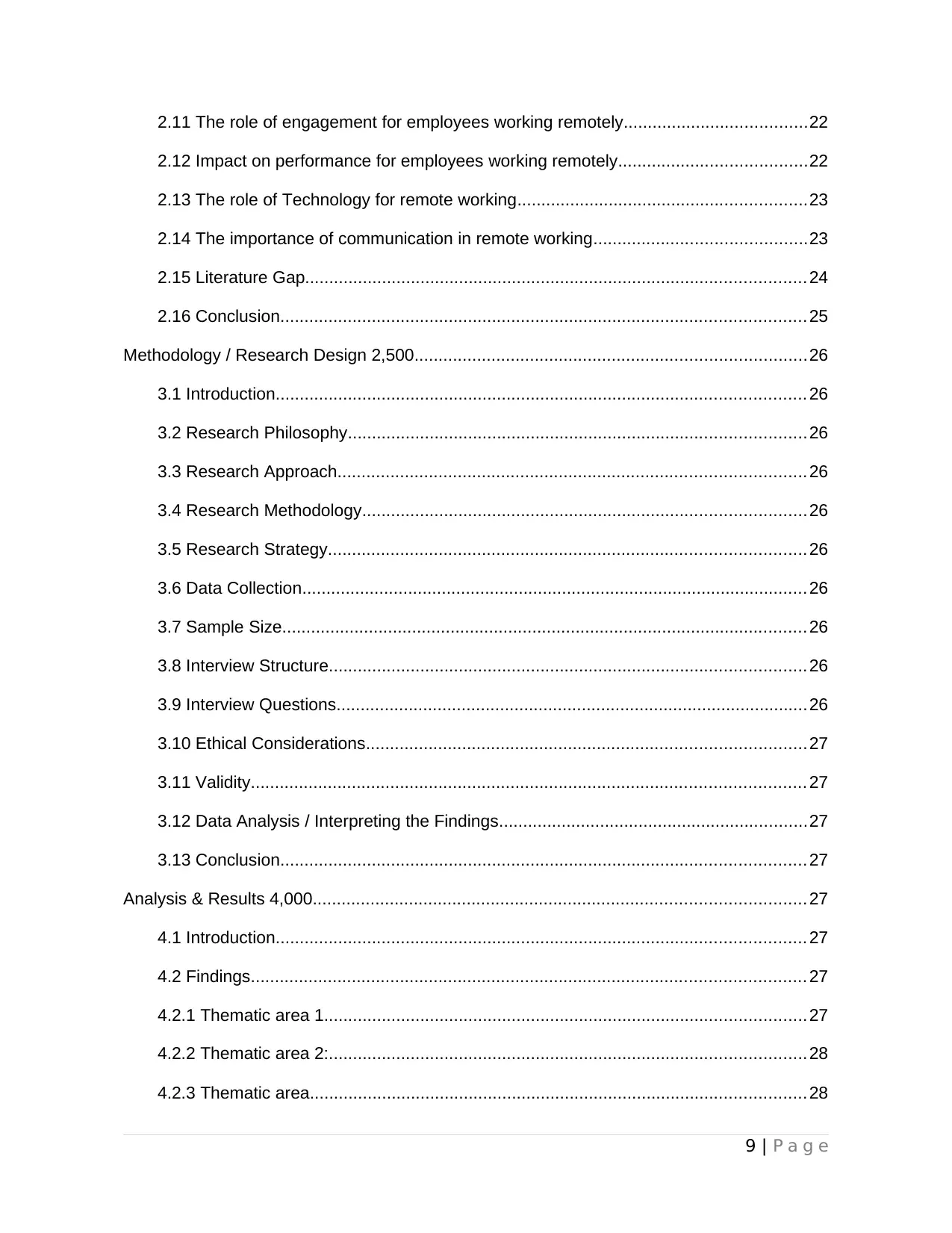
2.11 The role of engagement for employees working remotely......................................22
2.12 Impact on performance for employees working remotely.......................................22
2.13 The role of Technology for remote working............................................................23
2.14 The importance of communication in remote working............................................23
2.15 Literature Gap........................................................................................................24
2.16 Conclusion............................................................................................................. 25
Methodology / Research Design 2,500.................................................................................26
3.1 Introduction.............................................................................................................. 26
3.2 Research Philosophy...............................................................................................26
3.3 Research Approach.................................................................................................26
3.4 Research Methodology............................................................................................26
3.5 Research Strategy...................................................................................................26
3.6 Data Collection.........................................................................................................26
3.7 Sample Size............................................................................................................. 26
3.8 Interview Structure...................................................................................................26
3.9 Interview Questions..................................................................................................26
3.10 Ethical Considerations...........................................................................................27
3.11 Validity................................................................................................................... 27
3.12 Data Analysis / Interpreting the Findings................................................................27
3.13 Conclusion............................................................................................................. 27
Analysis & Results 4,000......................................................................................................27
4.1 Introduction.............................................................................................................. 27
4.2 Findings................................................................................................................... 27
4.2.1 Thematic area 1....................................................................................................27
4.2.2 Thematic area 2:...................................................................................................28
4.2.3 Thematic area.......................................................................................................28
9 | P a g e
2.12 Impact on performance for employees working remotely.......................................22
2.13 The role of Technology for remote working............................................................23
2.14 The importance of communication in remote working............................................23
2.15 Literature Gap........................................................................................................24
2.16 Conclusion............................................................................................................. 25
Methodology / Research Design 2,500.................................................................................26
3.1 Introduction.............................................................................................................. 26
3.2 Research Philosophy...............................................................................................26
3.3 Research Approach.................................................................................................26
3.4 Research Methodology............................................................................................26
3.5 Research Strategy...................................................................................................26
3.6 Data Collection.........................................................................................................26
3.7 Sample Size............................................................................................................. 26
3.8 Interview Structure...................................................................................................26
3.9 Interview Questions..................................................................................................26
3.10 Ethical Considerations...........................................................................................27
3.11 Validity................................................................................................................... 27
3.12 Data Analysis / Interpreting the Findings................................................................27
3.13 Conclusion............................................................................................................. 27
Analysis & Results 4,000......................................................................................................27
4.1 Introduction.............................................................................................................. 27
4.2 Findings................................................................................................................... 27
4.2.1 Thematic area 1....................................................................................................27
4.2.2 Thematic area 2:...................................................................................................28
4.2.3 Thematic area.......................................................................................................28
9 | P a g e
⊘ This is a preview!⊘
Do you want full access?
Subscribe today to unlock all pages.

Trusted by 1+ million students worldwide
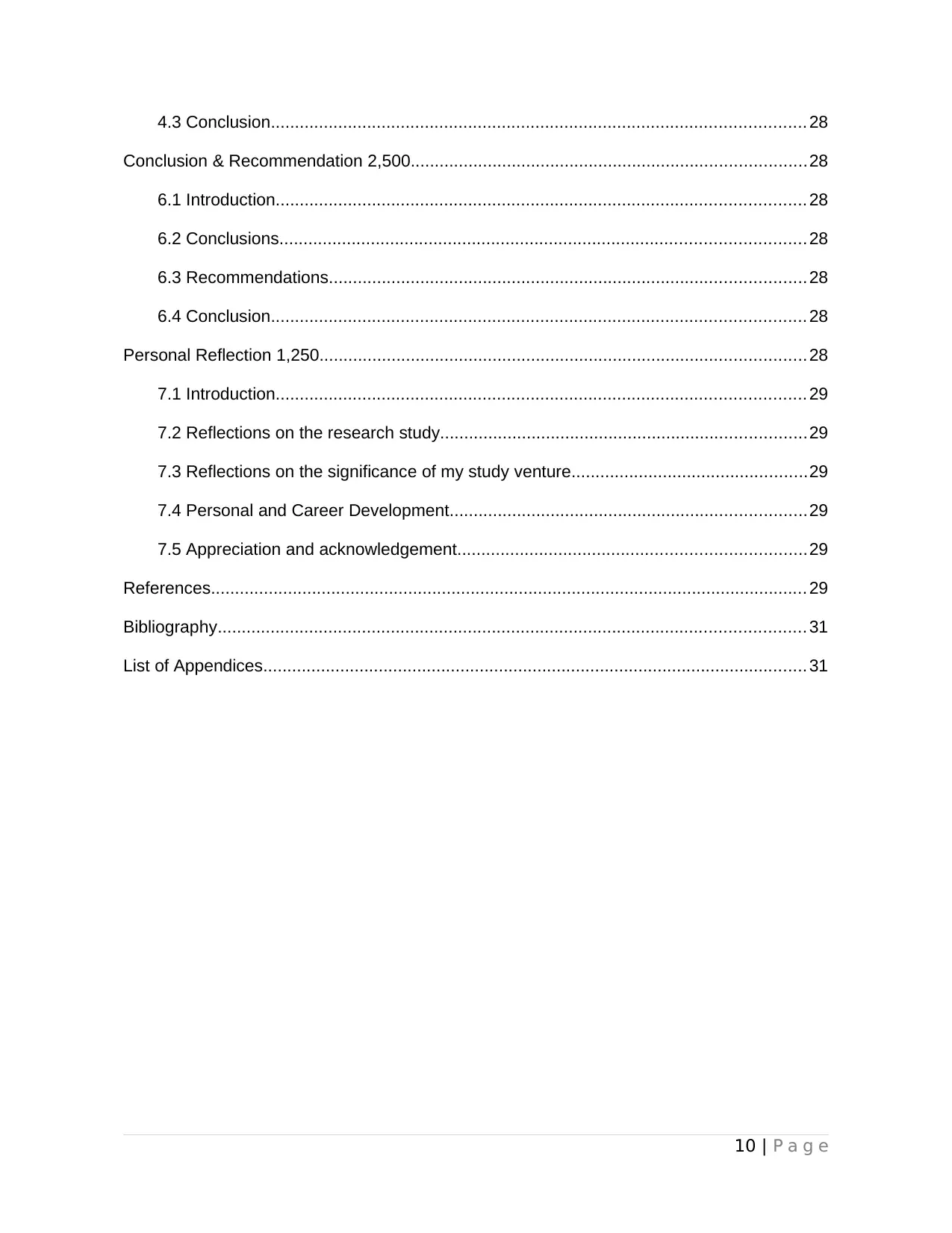
4.3 Conclusion............................................................................................................... 28
Conclusion & Recommendation 2,500..................................................................................28
6.1 Introduction.............................................................................................................. 28
6.2 Conclusions............................................................................................................. 28
6.3 Recommendations...................................................................................................28
6.4 Conclusion............................................................................................................... 28
Personal Reflection 1,250.....................................................................................................28
7.1 Introduction.............................................................................................................. 29
7.2 Reflections on the research study............................................................................29
7.3 Reflections on the significance of my study venture.................................................29
7.4 Personal and Career Development..........................................................................29
7.5 Appreciation and acknowledgement........................................................................29
References............................................................................................................................ 29
Bibliography.......................................................................................................................... 31
List of Appendices................................................................................................................. 31
10 | P a g e
Conclusion & Recommendation 2,500..................................................................................28
6.1 Introduction.............................................................................................................. 28
6.2 Conclusions............................................................................................................. 28
6.3 Recommendations...................................................................................................28
6.4 Conclusion............................................................................................................... 28
Personal Reflection 1,250.....................................................................................................28
7.1 Introduction.............................................................................................................. 29
7.2 Reflections on the research study............................................................................29
7.3 Reflections on the significance of my study venture.................................................29
7.4 Personal and Career Development..........................................................................29
7.5 Appreciation and acknowledgement........................................................................29
References............................................................................................................................ 29
Bibliography.......................................................................................................................... 31
List of Appendices................................................................................................................. 31
10 | P a g e
Paraphrase This Document
Need a fresh take? Get an instant paraphrase of this document with our AI Paraphraser
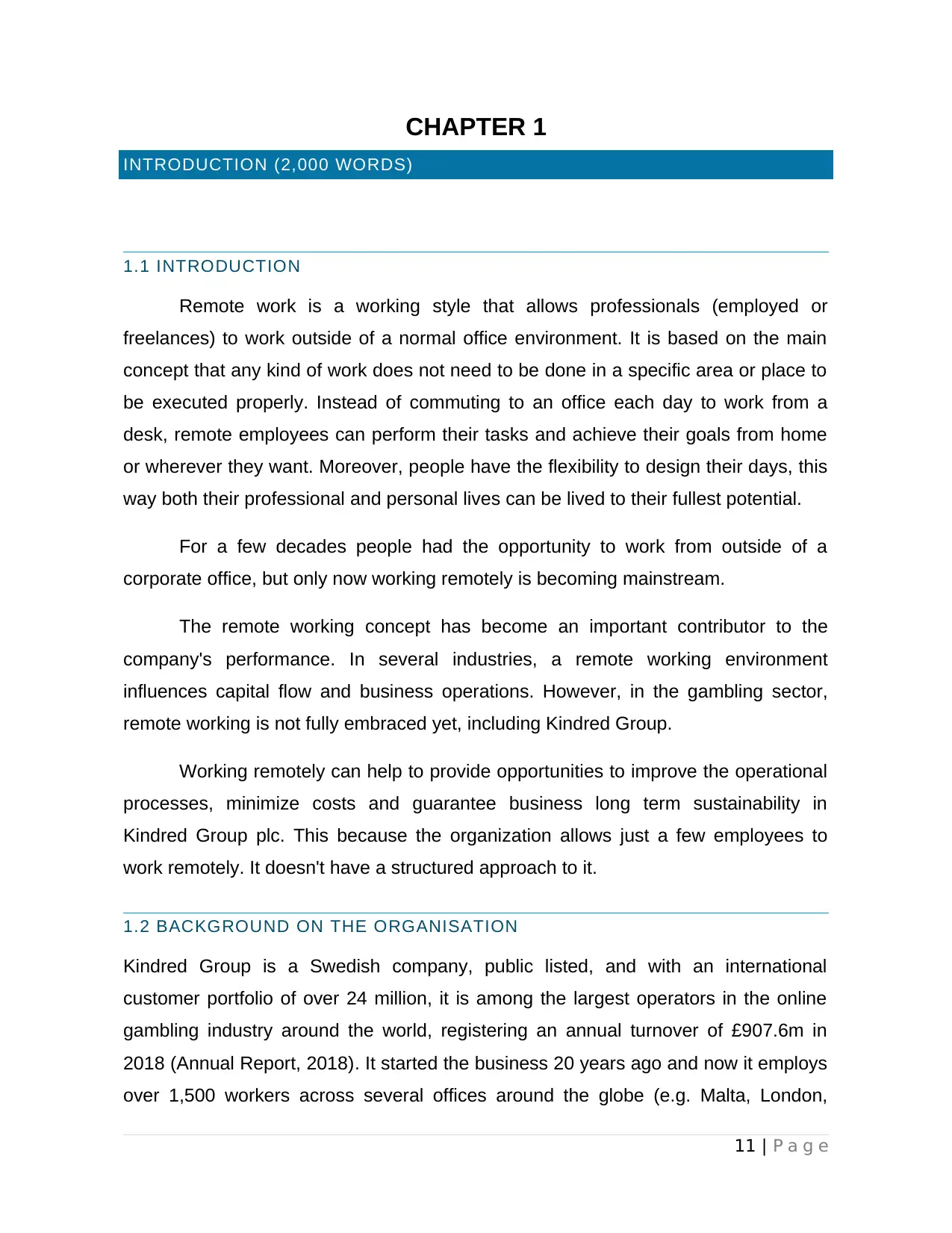
CHAPTER 1
INTRODUCTION (2,000 WORDS)
1.1 INTRODUCTION
Remote work is a working style that allows professionals (employed or
freelances) to work outside of a normal office environment. It is based on the main
concept that any kind of work does not need to be done in a specific area or place to
be executed properly. Instead of commuting to an office each day to work from a
desk, remote employees can perform their tasks and achieve their goals from home
or wherever they want. Moreover, people have the flexibility to design their days, this
way both their professional and personal lives can be lived to their fullest potential.
For a few decades people had the opportunity to work from outside of a
corporate office, but only now working remotely is becoming mainstream.
The remote working concept has become an important contributor to the
company's performance. In several industries, a remote working environment
influences capital flow and business operations. However, in the gambling sector,
remote working is not fully embraced yet, including Kindred Group.
Working remotely can help to provide opportunities to improve the operational
processes, minimize costs and guarantee business long term sustainability in
Kindred Group plc. This because the organization allows just a few employees to
work remotely. It doesn't have a structured approach to it.
1.2 BACKGROUND ON THE ORGANISATION
Kindred Group is a Swedish company, public listed, and with an international
customer portfolio of over 24 million, it is among the largest operators in the online
gambling industry around the world, registering an annual turnover of £907.6m in
2018 (Annual Report, 2018). It started the business 20 years ago and now it employs
over 1,500 workers across several offices around the globe (e.g. Malta, London,
11 | P a g e
INTRODUCTION (2,000 WORDS)
1.1 INTRODUCTION
Remote work is a working style that allows professionals (employed or
freelances) to work outside of a normal office environment. It is based on the main
concept that any kind of work does not need to be done in a specific area or place to
be executed properly. Instead of commuting to an office each day to work from a
desk, remote employees can perform their tasks and achieve their goals from home
or wherever they want. Moreover, people have the flexibility to design their days, this
way both their professional and personal lives can be lived to their fullest potential.
For a few decades people had the opportunity to work from outside of a
corporate office, but only now working remotely is becoming mainstream.
The remote working concept has become an important contributor to the
company's performance. In several industries, a remote working environment
influences capital flow and business operations. However, in the gambling sector,
remote working is not fully embraced yet, including Kindred Group.
Working remotely can help to provide opportunities to improve the operational
processes, minimize costs and guarantee business long term sustainability in
Kindred Group plc. This because the organization allows just a few employees to
work remotely. It doesn't have a structured approach to it.
1.2 BACKGROUND ON THE ORGANISATION
Kindred Group is a Swedish company, public listed, and with an international
customer portfolio of over 24 million, it is among the largest operators in the online
gambling industry around the world, registering an annual turnover of £907.6m in
2018 (Annual Report, 2018). It started the business 20 years ago and now it employs
over 1,500 workers across several offices around the globe (e.g. Malta, London,
11 | P a g e
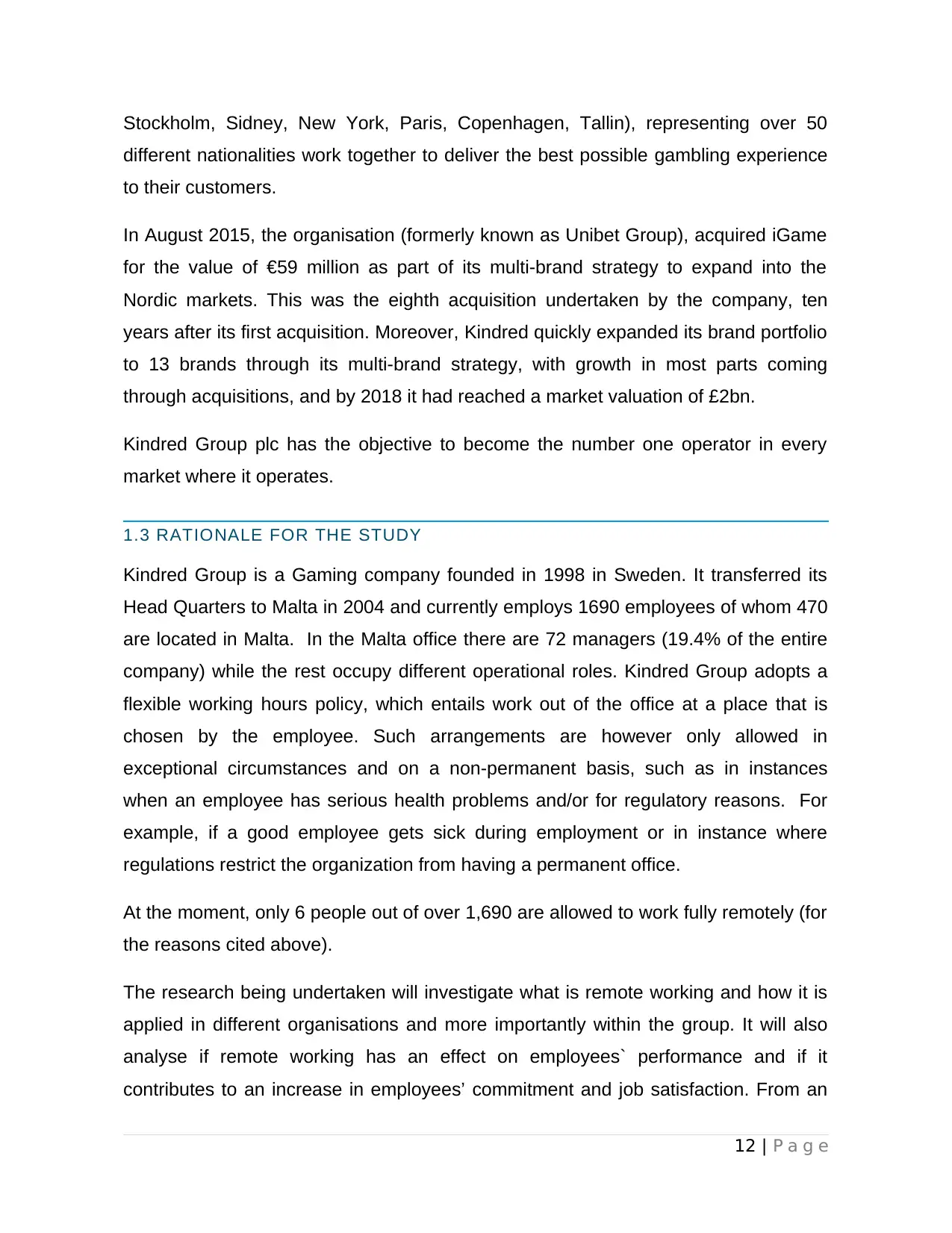
Stockholm, Sidney, New York, Paris, Copenhagen, Tallin), representing over 50
different nationalities work together to deliver the best possible gambling experience
to their customers.
In August 2015, the organisation (formerly known as Unibet Group), acquired iGame
for the value of €59 million as part of its multi-brand strategy to expand into the
Nordic markets. This was the eighth acquisition undertaken by the company, ten
years after its first acquisition. Moreover, Kindred quickly expanded its brand portfolio
to 13 brands through its multi-brand strategy, with growth in most parts coming
through acquisitions, and by 2018 it had reached a market valuation of £2bn.
Kindred Group plc has the objective to become the number one operator in every
market where it operates.
1.3 RATIONALE FOR THE STUDY
Kindred Group is a Gaming company founded in 1998 in Sweden. It transferred its
Head Quarters to Malta in 2004 and currently employs 1690 employees of whom 470
are located in Malta. In the Malta office there are 72 managers (19.4% of the entire
company) while the rest occupy different operational roles. Kindred Group adopts a
flexible working hours policy, which entails work out of the office at a place that is
chosen by the employee. Such arrangements are however only allowed in
exceptional circumstances and on a non-permanent basis, such as in instances
when an employee has serious health problems and/or for regulatory reasons. For
example, if a good employee gets sick during employment or in instance where
regulations restrict the organization from having a permanent office.
At the moment, only 6 people out of over 1,690 are allowed to work fully remotely (for
the reasons cited above).
The research being undertaken will investigate what is remote working and how it is
applied in different organisations and more importantly within the group. It will also
analyse if remote working has an effect on employees` performance and if it
contributes to an increase in employees’ commitment and job satisfaction. From an
12 | P a g e
different nationalities work together to deliver the best possible gambling experience
to their customers.
In August 2015, the organisation (formerly known as Unibet Group), acquired iGame
for the value of €59 million as part of its multi-brand strategy to expand into the
Nordic markets. This was the eighth acquisition undertaken by the company, ten
years after its first acquisition. Moreover, Kindred quickly expanded its brand portfolio
to 13 brands through its multi-brand strategy, with growth in most parts coming
through acquisitions, and by 2018 it had reached a market valuation of £2bn.
Kindred Group plc has the objective to become the number one operator in every
market where it operates.
1.3 RATIONALE FOR THE STUDY
Kindred Group is a Gaming company founded in 1998 in Sweden. It transferred its
Head Quarters to Malta in 2004 and currently employs 1690 employees of whom 470
are located in Malta. In the Malta office there are 72 managers (19.4% of the entire
company) while the rest occupy different operational roles. Kindred Group adopts a
flexible working hours policy, which entails work out of the office at a place that is
chosen by the employee. Such arrangements are however only allowed in
exceptional circumstances and on a non-permanent basis, such as in instances
when an employee has serious health problems and/or for regulatory reasons. For
example, if a good employee gets sick during employment or in instance where
regulations restrict the organization from having a permanent office.
At the moment, only 6 people out of over 1,690 are allowed to work fully remotely (for
the reasons cited above).
The research being undertaken will investigate what is remote working and how it is
applied in different organisations and more importantly within the group. It will also
analyse if remote working has an effect on employees` performance and if it
contributes to an increase in employees’ commitment and job satisfaction. From an
12 | P a g e
⊘ This is a preview!⊘
Do you want full access?
Subscribe today to unlock all pages.

Trusted by 1+ million students worldwide
1 out of 49
Related Documents
Your All-in-One AI-Powered Toolkit for Academic Success.
+13062052269
info@desklib.com
Available 24*7 on WhatsApp / Email
![[object Object]](/_next/static/media/star-bottom.7253800d.svg)
Unlock your academic potential
Copyright © 2020–2025 A2Z Services. All Rights Reserved. Developed and managed by ZUCOL.





